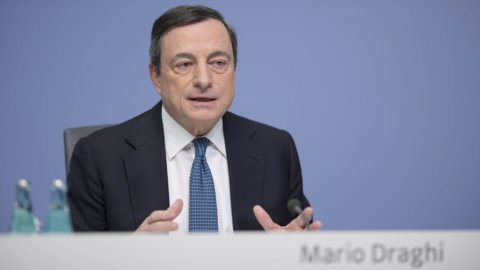“The outlook for the global economy is surrounded by uncertainty. We face persistent disinflationary forces. Questions are raised about the direction in which Europe will go and its resilience in the face of new shocks”. He supports it Mario Draghi in the preface of the 2015 annual report on the activities of the ECB.
“Even in the face of disinflationary forces on a global scale – he added -, the ECB does not bow to an excessively low level of inflation. The adverse effects intensified in early 2016, necessitating an even more expansionary monetary policy stance on our part”.
As for 2015, according to Draghi “it was a year of recovery for the euro area economy, but inflation continued to follow a downward trajectory. In this context, a central issue in 2015 for the area was the strengthening of trust: among consumers to promote spending; by businesses to restart hiring and investment; at the bank level to increase lending”.
The ECB president argues that “this was essential to fuel the recovery and help bring inflation back towards our target of rates below but close to 2%. As the year progressed, we actually witnessed the consolidation of confidence. Domestic demand has replaced external demand as the driver of growth on the back of improving consumer confidence.
In the euro area as a whole, Draghi goes on to explain, “the dynamics of credit has recovered. Employment has continued to increase and fears of deflation, which had spread in the area at the beginning of 2015, have been entirely allayed”. Quantitative easing "will lead to an increase in euro area GDP of around 1,5 percentage points over the period 2015-2018," she concluded.





